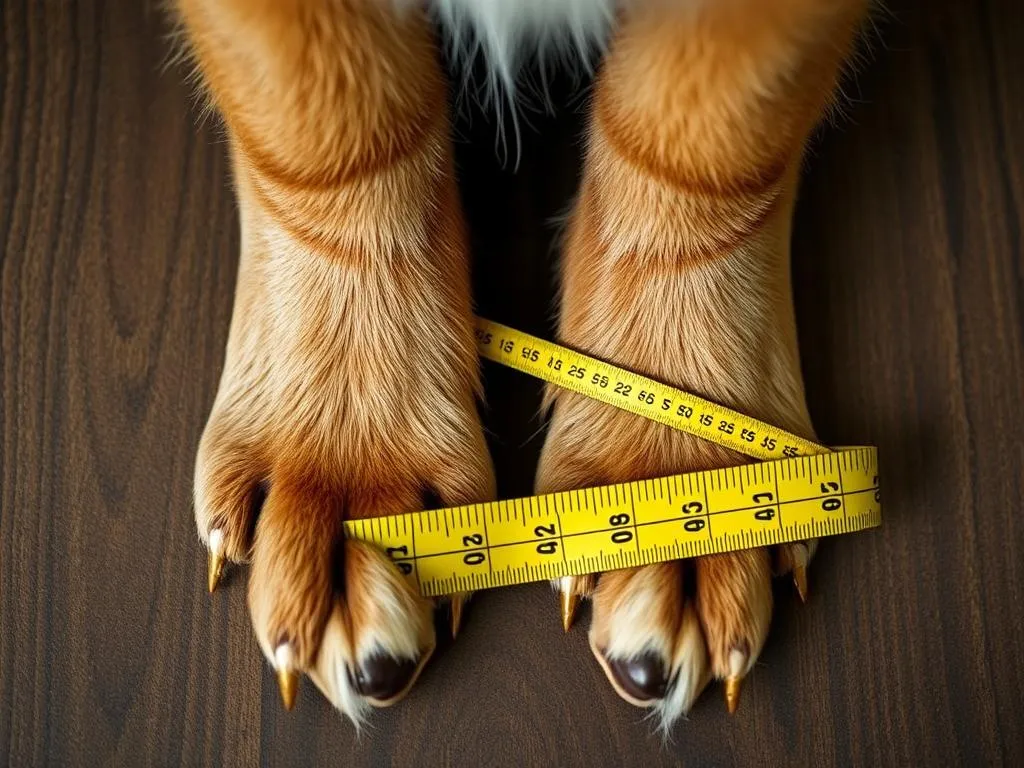
Introduction
When it comes to ensuring your furry friend’s comfort and safety, one essential aspect that often gets overlooked is the correct sizing of dog boots. Knowing how to measure dog paws for boots accurately is crucial for providing the right fit. Ill-fitting boots can lead to discomfort, chafing, or even injuries. As a responsible dog owner, taking the time to measure your dog’s paws will ultimately pay off in the form of protection and comfort.
Dog boots serve various purposes, from shielding paws against harsh weather conditions to preventing injuries caused by rough terrains. With the right pair of boots, your dog can enjoy outdoor activities without the discomfort that comes from extreme temperatures or abrasive surfaces. This article aims to provide a comprehensive, step-by-step guide on measuring dog paws accurately for a perfect fit.
Understanding Dog Boots
Types of Dog Boots
There are several types of dog boots, each designed for specific conditions and uses. Here’s a brief overview:
-
Waterproof Boots: Made from materials that repel water, these boots are ideal for rainy days or snowy conditions. They help keep your dog’s paws dry and warm.
-
Insulated Boots: Designed for colder climates, insulated boots provide extra warmth and protection against snow and ice.
-
Rugged Boots: These boots come with tough materials and soles, suitable for hiking or walking on rocky terrains. They protect paws from cuts and abrasions.
-
Lightweight Boots: Ideal for everyday use, these boots are breathable and comfortable, perfect for short walks or playtime at the park.
Understanding the various types of dog boots available will help you choose the right one for your dog’s specific needs.
Benefits of Dog Boots
Investing in dog boots offers numerous benefits:
-
Protection from Harsh Weather: Boots provide a barrier against hot pavement, snow, and ice, preventing burns or frostbite.
-
Prevention of Injuries: Rough and jagged terrains can cause cuts and abrasions. Boots help safeguard your dog’s paws during outdoor adventures.
-
Comfort for Dogs with Paw Issues: Dogs suffering from conditions like paw pad injuries or sensitivities can benefit from the added protection that boots offer.
Preparing for Measurement
Gather Necessary Materials
Before you begin the measuring process, gather the necessary materials:
- Paper and Pen: To jot down measurements.
- Ruler or Measuring Tape: To measure accurately.
- Treats: To reward your dog for cooperation during measurement.
It’s best to choose a time when your dog is calm, perhaps after a walk or playtime, to ensure they are relaxed during the measurement process.
Understanding Dog Paw Anatomy
To measure accurately, it’s essential to understand the basic anatomy of a dog’s paw. A dog’s paw consists of the following components:
- Toes: Dogs typically have four primary toes and a dewclaw, which is often higher up on the leg.
- Pads: The pads are the soft, fleshy parts of the paw that provide cushioning and traction.
Measuring all parts of the paw, including length, width, and circumference, ensures a proper fit for the boots, enhancing your dog’s comfort and mobility.
Step-by-Step Guide to Measuring Dog Paws
Measuring the Length of the Paw
To measure the length of your dog’s paw:
- Place the Dog’s Paw on a Sheet of Paper: Ensure the paw is flat and relaxed.
- Mark the Back of the Paw: Use a pen to mark the point where the paw meets the leg.
- Mark the Tip of the Longest Toe: Identify which toe is the longest and mark this point as well.
- Measure the Distance: Use a ruler or measuring tape to measure the distance between the two marks.
Tip: Measure both the front and back paws, as they may differ in size.
Measuring the Width of the Paw
Next, measure the width of the paw:
- Identify the Widest Part of the Paw: This is typically across the pads.
- Use a Ruler or Measuring Tape: Place it across this widest point and record the measurement.
Importance: Measuring the width is crucial for ensuring a comfortable fit, as a narrow boot can pinch the paw and cause discomfort.
Measuring the Circumference of the Ankle
Lastly, measure the circumference around the ankle area:
- Use a Soft Measuring Tape: Wrap it around the narrowest part of the ankle.
- Take Note of the Measurement: Ensure that the tape is snug but not too tight.
Importance: This measurement is essential for boots that secure around the ankle, preventing them from slipping off during use.
Interpreting Measurements
Comparing Measurements to Size Charts
Once you have all the measurements, it’s time to compare them to the manufacturer’s size charts. Different brands may have different sizing, so always refer to the specific chart for the boots you’re considering.
Tip: If your dog’s measurements fall between sizes, it’s often best to choose the larger size for comfort.
Common Sizing Mistakes to Avoid
Avoiding common mistakes during the measuring process can help ensure a proper fit:
- Measuring Only One Paw: Always measure both front and back paws, as they can be different sizes.
- Ignoring Width: Width is just as important as length; neglecting it may lead to an uncomfortable fit.
- Selecting Based on Assumptions: Always rely on actual measurements rather than guessing based on breed or previous sizes.
A snug but comfortable fit is key to ensuring your dog’s comfort while wearing boots.
Fitting the Dog Boots
Trying on the Boots
Once you have the right size, it’s time to try the boots on your dog:
- Introduce the Boots Gradually: Allow your dog to sniff and explore the boots before putting them on.
- Put on One Boot at a Time: Start with one paw to see how your dog reacts.
Pay close attention to your dog’s reactions. If they seem agitated or uncomfortable, give them time to get used to the sensation of wearing boots.
Tips for Getting Your Dog Used to Wearing Boots
To help your dog acclimate to their new boots, consider the following techniques:
- Start Slow: Let your dog wear the boots for short periods initially, gradually increasing the time as they become more comfortable.
- Use Positive Reinforcement: Reward your dog with treats and praise every time they wear the boots. This creates a positive association.
- Practice Indoors: Before venturing outside, let your dog walk around indoors to get used to the feel of the boots.
With patience and persistence, most dogs will learn to accept and even enjoy wearing their boots.
Conclusion
Measuring your dog’s paws accurately for boots is a crucial step in ensuring their comfort and safety. By understanding the anatomy of their paws, preparing for measurement correctly, and following a straightforward measuring process, you can confidently select the right pair of boots for your furry friend.
Properly fitted boots not only protect your dog’s paws from harsh conditions but also enhance their overall outdoor experience. So, take the time to measure, choose wisely, and enjoy many happy adventures with your canine companion!
FAQs
How often should I measure my dog’s paws?
It’s a good idea to measure your dog’s paws every six months or whenever you notice changes in their weight or if they are transitioning from puppyhood to adulthood. Growth spurts can alter paw size, so keeping track ensures a proper fit.
Can I use human shoe sizes as a reference?
While it might be tempting to use human shoe sizes, it’s essential to remember that dog paw sizes differ significantly. Always rely on actual measurements rather than converting to human sizes for the best fit.
What if my dog has an unusual paw shape?
If your dog has an unusual paw shape, such as wide or flat paws, consider looking for brands that specialize in custom or adjustable boots. You may also need to measure more carefully to ensure that the boots accommodate their unique shape.
By following this guide on how to measure dog paws for boots, you’ll be well-equipped to ensure your dog enjoys the many benefits that come with wearing boots while keeping their paws protected and comfortable.









